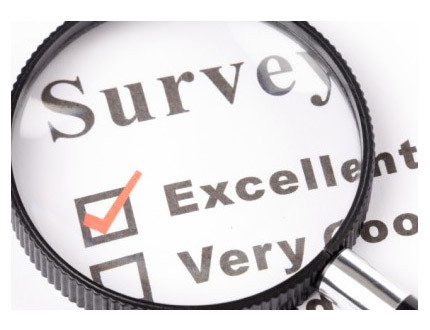You are viewing our site as an Agent, Switch Your View:
Agent | Broker Reset Filters to Default Back to ListSurveys and Research by WAV Group
 |
 |
|
Surveys and Research WAV Group builds and executes custom surveys to meet your business needs, and conducts focus group studies and PRO Research. Surveys are a fast, effective and affordable tool to better understand your target audience, whether they are your members, agents or consumers. WAV Group will handle the entire survey process from needs assessment and building the instrument to releasing the survey and analyzing the results. For years, successful companies have used focus groups to "test the waters" and fine tune their business approach prior to rolling out new products and services. Focus Groups provide immediate feedback and validation allowing your organization to reduce risk and optimize return with any new undertaking. So whether your technology company is getting ready to build specs for your next release, or your organization wants to assess your current products and services or with your members and customers, focus groups can minimize your risk and help insure a successful outcome. WAV Group believes in many cases "pain causes change." If you have ever been part of a service, product or technology release that did not gain the type of acceptance you anticipated looking back they would bet that it was more of a "vitamin" than a "pain killer." Everybody knows they should take vitamins but face it, most of us don't, or at least not every day. But when something is causing pain, people take action. That is the foundation of PRO Research. WAV Group builds and executes custom process research to understand what is working and what isn't to assist organizations in planning. Information gained from process research can improve software products, association services, member and consumer satisfaction. It can also be used as a valuable part of the overall strategic planning process. |
 WAV Group builds and executes custom surveys to meet your business needs. Surveys are a fast, effective and affordable tool to better understand your target audience. WAV Group builds and executes custom surveys to meet your business needs. Surveys are a fast, effective and affordable tool to better understand your target audience. |
 WAV Group will handle the entire survey process from needs assessment and building the instrument to releasing the survey and analyzing the results. WAV Group will handle the entire survey process from needs assessment and building the instrument to releasing the survey and analyzing the results. |
 WAV Group builds and executes custom process research to understand what is working and what isn't to assist organizations in planning. WAV Group builds and executes custom process research to understand what is working and what isn't to assist organizations in planning. |
 In many cases pain causes change! If you have ever launched a product or technology release that did not gain the traction you anticipated, it was more of a "vitamin" than a "pain killer." In many cases pain causes change! If you have ever launched a product or technology release that did not gain the traction you anticipated, it was more of a "vitamin" than a "pain killer." |
|
Key Differentiatiors |
| WAV Group builds and executes custom process research to understand what is working and what isn't to assist organizations in planning. Information gained from process research can improve software products, association services, member and consumer satisfaction. It can also be used as a valuable part of the overall strategic planning process. |









